Table of Contents
Why Does the Golden Temple Have a Dress Code?. 1
History and Significance of the Golden Temple. 2
Detailed Golden Temple Dress Code Rules. 2
Head Covering: The Most Important Rule. 2
Modest Clothing: What to Wear at the Golden Temple. 3
Etiquette and Other Rules Beyond Dress Code. 4
Personal Experiences and Tips from Visitors. 4
Best Time to Visit and Planning Your Trip. 4
FAQs on Amritsar Golden Temple Dress Code. 4
Conclusion: Embrace the Spirit of the Golden Temple. 5
The Amritsar Golden Temple, also known as Sri Harmandir Sahib or Sri Darbar Sahib, is one of the most sacred places in the world for Sikhs and a must-visit site for anyone traveling to Punjab, India. If you’re planning a trip, understanding the Amritsar Golden Temple dress code is essential to show respect and ensure a smooth experience. This guide will cover everything you need to know about the Golden Temple attire rules, including head covering requirements, modest clothing tips, what to avoid, and why these traditions matter. Whether you’re a first-time visitor or returning pilgrim, we’ll explain it all in simple, easy-to-understand language to help your visit be peaceful and meaningful.
The Golden Temple in Amritsar attracts millions of devotees and tourists every year, drawn to its stunning gold-plated architecture, serene holy pool (Sarovar), and the spirit of equality and service in Sikhism. But like many religious sites, it has specific entry rules to maintain its sanctity. Ignoring the Amritsar Golden Temple dress code could lead to being turned away or gently reminded by volunteers (sevadars).
Why Does the Golden Temple Have a Dress Code?
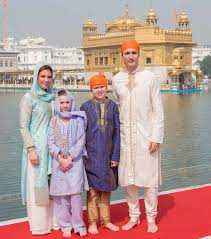
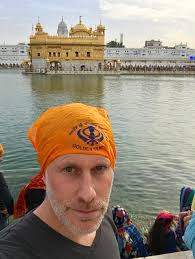

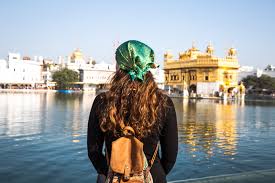
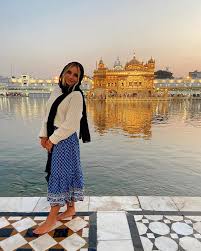
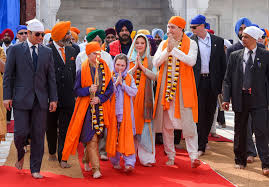
Before diving into the specifics of the Golden Temple dress code, it’s helpful to understand the “why” behind it. In Sikh tradition, the temple is a place of worship, reflection, and community. The rules aren’t just about appearance; they’re rooted in respect for the divine and the teachings of the Sikh Gurus.
Sikhism emphasizes modesty, humility, and equality. Covering your head, for example, is a key practice. According to Sikh beliefs, the human body has ten “doors” or openings, with the tenth door, called Dasam Duar, located at the top of the head. This is seen as a spiritual gateway to enlightenment and connection with God (Waheguru). Worldly distractions can “cloud” this door, so covering the head helps protect it and keeps the mind focused on prayer and remembrance (Simran). This isn’t unique to Sikhs—many religions have head-covering traditions for similar reasons, like showing reverence.
Modest clothing aligns with the idea of humility. Tight or revealing outfits can draw attention away from spirituality, so the focus is on comfortable, covering attire that lets everyone feel equal, regardless of background. These rules help create a peaceful atmosphere where people from all walks of life can come together. As one visitor shared discussion, following the dress code shows you’re there to honor the space, not just sightsee.
The Shiromani Gurdwara Parbandhak Committee (SGPC), which manages the temple, enforces these guidelines to preserve the site’s purity. They’re not strict for the sake of it; they’re about fostering respect. Even Prime Ministers and celebrities follow them when visiting!
History and Significance of the Golden Temple
To fully appreciate the Amritsar Golden Temple dress code, let’s take a moment to explore the temple’s background. Founded in the late 16th century by Guru Arjan Dev Ji, the fifth Sikh Guru, the Golden Temple was built as a place where people of all castes, religions, and genders could worship freely. Its foundation stone was laid by a Muslim saint, Mian Mir, symbolizing interfaith harmony.
The temple’s name comes from its gold-covered exterior, added in the 19th century by Maharaja Ranjit Singh. At its heart is the Guru Granth Sahib, the holy scripture treated as the eternal Guru. The surrounding Sarovar is believed to have healing properties, and bathing in it (while following rules) is a common ritual.
Visiting the Golden Temple isn’t just about seeing a beautiful building—it’s about experiencing Sikh values like seva (selfless service) and langar (community kitchen), where free meals are served to all. In 2025, with tourism booming, knowing the Golden Temple entry rules ensures you can participate fully without any hiccups.
The dress code has evolved slightly over time but remains grounded in tradition. For instance, head covering has been mandatory since the temple’s early days, reflecting broader Sikh practices. Today, it’s inclusive—western tourists aren’t expected to wear traditional Punjabi clothes, as long as they’re modest.
Detailed Golden Temple Dress Code Rules
Now, let’s get into the nitty-gritty of the Amritsar Golden Temple dress code. These rules apply to everyone: men, women, children, locals, and foreigners. The temple is open 24/7, but peak times can be crowded, so plan accordingly.
Head Covering: The Most Important Rule
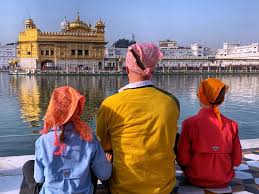
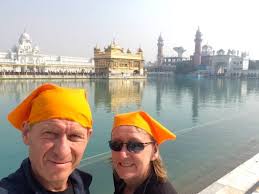
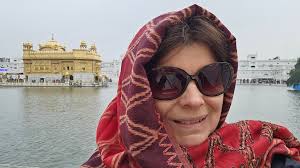
Head covering is non-negotiable in the Golden Temple attire guidelines. Everyone must cover their head before entering the complex. This includes the Parikrama (walkway around the Sarovar) and the main shrine.
- What to Use: A scarf, dupatta, handkerchief, bandana, or turban works. If you forget, free orange scarves are provided at the entrances. You can also buy colorful ones from nearby shops for a small fee .
- How to Wear It: Tie it securely so it doesn’t slip. For women with long hair (like below-waist length), a larger dupatta or scarf is ideal to cover all hair without it peeking out too much. From personal experiences shared online, people with long blonde hair found it tricky but manageable with practice. One tip: Use pins or clips to keep it in place, as volunteers might politely point out if it slips.
- Does Hair Need to Be Completely Invisible? Not necessarily. The focus is on covering the head properly. If you have very long hair, it’s okay if some strands are visible, as long as the covering is respectful. Light, chiffon dupattas are fine, but thicker fabrics might feel more secure for windy days. The key is modesty, not perfection.
- For Men: Many opt for a simple handkerchief or patka (small turban). If you’re interested, volunteers sometimes offer turban-tying lessons on Sundays.
- Spiritual Reason: As mentioned, it protects the Dasam Duar, the tenth gate at the crown of the head. In Sikh philosophy, this opening allows spiritual energy to flow, leading to enlightenment. Covering it helps maintain focus during prayer. It’s also a sign of equality—everyone, from kings to commoners, does it.
If your head covering slips, don’t panic. Sevadars (in blue uniforms) are there to help, not scold. One traveller recounted how they were gently reminded, turning it into a learning moment.
Modest Clothing: What to Wear at the Golden Temple
The Golden Temple dress code emphasizes modest attire that covers the body without being revealing. The goal is to avoid distractions and promote a sense of humility.
- General Guidelines: Clothes should cover shoulders, chest, and knees. Loose-fitting outfits are preferred over tight ones, as clingy fabrics can seem less modest.
- For Women: Opt for salwar kameez, long kurtas over leggings, or maxi dresses/skirts. Jeans are allowed if they’re full-length and paired with a long top that covers the hips. Avoid sleeveless tops, short skirts, or low-necklines. A long kurta in a matching or contrasting shade with leggings is a comfortable, stylish choice. If you’re worried about transparency, layer up.
- For Men: Full-length pants or jeans (no shorts) and shirts with sleeves. T-shirts are fine if not too tight. Traditional kurta-pajama is optional but appreciated.
- For Children: Similar rules—cover shoulders and knees. Comfortable jeans and tops work, but ensure heads are covered.
- Jeans and Western Wear: Yes, jeans are permitted in the Golden Temple as long as they’re not ripped, tight, or flashy. Plain, loose jeans with a modest top are common among tourists. Western outfits like long pants and collared shirts are okay, proving the rules are flexible for global visitors.
- Seasonal Tips: In summer (March-July), choose breathable cotton. Monsoon (July-September) calls for quick-dry fabrics. Winter (October-February) means layering with shawls, but keep the base modest.
What Not to Wear or Bring
To avoid issues with Golden Temple entry rules, steer clear of:
- Shorts, miniskirts, sleeveless dresses, tank tops, or anything above the knee.
- Tight-fitting clothes that outline the body too closely.
- Ripped jeans or outfits with offensive prints.
- Leather items (though not strictly banned, they’re avoided out of respect for non-violence).
- Intoxicants like tobacco, alcohol, or chewing gum—strictly prohibited.
Also, remove shoes at the Jorha Ghar (shoe storage) and wash feet in the pools provided. This ritual cleansing is part of the experience.
Etiquette and Other Rules Beyond Dress Code
The Amritsar Golden Temple dress code is just one part of respectful behaviour. Here are more tips:
- Photography: Allowed in the outer areas, but get permission inside. No photos in the Sanctum Sanctorum.
- Sarovar Bathing: Dip if you like, but no swimming, soap, or shampoo. Use the Wet Clothes Room afterward.
- Langar: Join the free community meal—sit on the floor, eat with hands, and volunteer if possible. It’s a highlight!
- Behavior: Walk clockwise around the Sarovar, keep phones silent, and avoid eating in the Parikrama.
- Safety: Deposit valuables at official counters. Don’t accept food from strangers.
These rules ensure everyone enjoys the serene vibe. As one X post noted, following them shows respect, just like in churches or mosques.
Personal Experiences and Tips from Visitors
Visitors often share challenges with long hair. One person with waist-length hair worried about full coverage but found a large scarf worked.
For modest dressing, a kurta over leggings was recommended as comfy and compliant. If you’re from the UK or elsewhere, pack versatile pieces. And remember, western toilets are usually available, easing concerns for international travellers.
While Golden Temple has strict head rules, it’s similar to temple dress codes in South India or European churches. Hindus implement similar protections for their sites.
If you’re unsure, ask sevadars—they’re friendly. Shops near the temple sell affordable attire if needed.
Best Time to Visit and Planning Your Trip
For a less crowded experience, visit early morning or late evening. Avoid festivals if you prefer quiet.
Combine your visit with nearby sites like Jallianwala Bagh, Partition Museum. Stay in Amritsar hotels that offer cultural insights.
FAQs on Amritsar Golden Temple Dress Code
1.Is there a strict dress code for Golden Temple? Yes, modest clothing and head covering are required.
2.Can I wear jeans at Golden Temple? Yes, if full-length and not tight.
3.What head covering for long hair? Use a large dupatta; hair doesn’t need to be invisible.
4.Are shorts allowed? No, knees must be covered.
5.Do children need to follow? Yes, but it’s simple for them.
6.Why cover the head? To protect Dasam Duar and show respect.
7.Can tourists wear western clothes? Absolutely, if modest.
8.What if I forget a scarf? Free ones are provided.
9.Is photography okay? In outer areas, yes.
10.Any tips for women? Long kurtas or dresses work best.
Conclusion: Embrace the Spirit of the Golden Temple
Following the Amritsar Golden Temple dress code isn’t a hassle—it’s a way to connect deeper with this holy site. By covering your head and dressing modestly, you’re honouring Sikh traditions like protecting the Dasam Duar and promoting equality. Whether you have long hair or are a western tourist, a little preparation goes a long way.
The Golden Temple teaches us about humility, service, and unity. Plan your visit, respect the rules, and leave with memories of peace and inspiration. If you’re searching for Golden Temple attire tips or head covering guidelines, this guide has you covered. Safe travels to Amritsar!
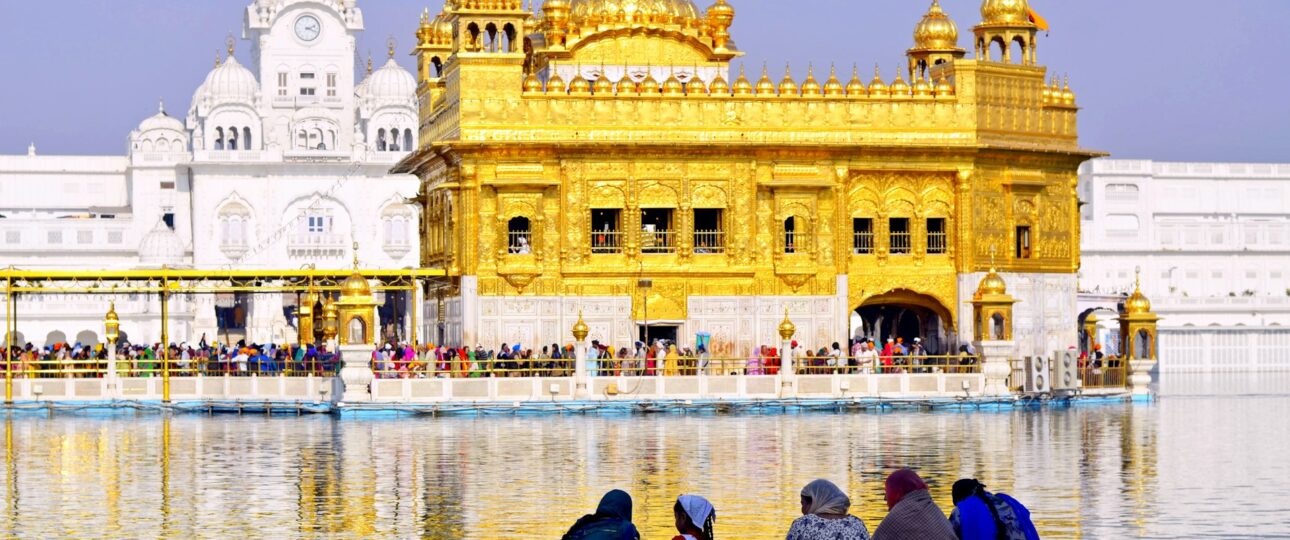
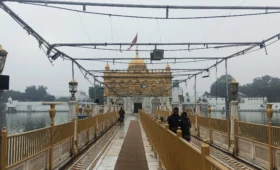

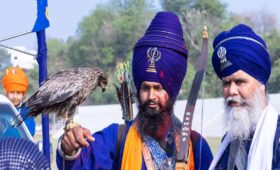
[…] 5. Golden Temple Entry Rules & Visitor Guidelines […]
[…] Dress & Etiquette at the Golden Temple […]
[…] went above and beyond to make him feel at home. From treating him to traditional Indian meals to accompanying him on his visit to the Golden Temple, Gaurav ensured McNaught experienced the true spirit of Indian warmth and […]